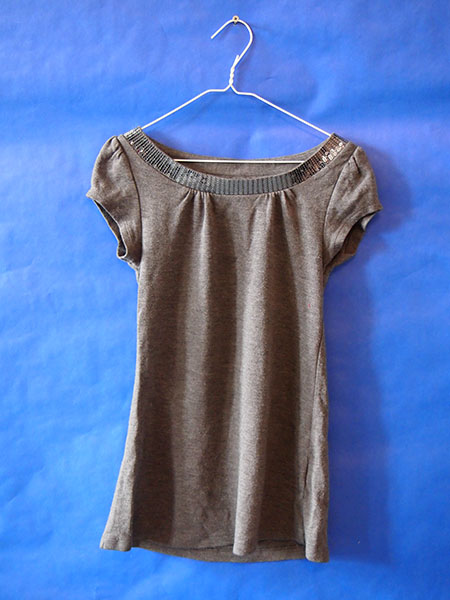![]() body | color | collections | commodity | cube | document | fabric | fetish | gender | glass | home | identity | living | machine | metal | minimal | mobility | narrative | olfactory | organic |
body | color | collections | commodity | cube | document | fabric | fetish | gender | glass | home | identity | living | machine | metal | minimal | mobility | narrative | olfactory | organic |
![]() pain | paper | plastic | plugs | power | protective | rectangular | ritual | round | sound | souvenir | spiritual | style | text-based | time | tool | touch | uniform | value | visual | warm | wood
pain | paper | plastic | plugs | power | protective | rectangular | ritual | round | sound | souvenir | spiritual | style | text-based | time | tool | touch | uniform | value | visual | warm | wood
| Clothing: Gray Shirt with Sequin Neckline | |||
Narrative: H&M H&M's supply chain consists of Factory Employees, Second-tier Suppliers, Suppliers, Shippers, Auditors, Merchandisers, and Buyers. Cotton is farmed and picked in India, China, and Turkey Clothing design and samples made in Stockholm, Sweden where the headquarters are located. Dying mills and water supply near the Yangtze River in China. Washed and cleaned with water from the Brahmaputra River in Assam. Made and manufactured in Dhaka, Bangladesh; Bangkok, Thailand; Bangalore, Karnataka, India; Bandung, Indonesia; among others. H&M clothing labels and tags are printed in Stockholm, Sweden (approved by the EU Ecolabel Company). Papers are made from Forest Stewardship Council trees (FSC certified). Final products are sent to Hamburg, Germany where they are distributed to store locations. In a recent study commissioned by Greenpeace International, several major clothing brands including H&M were found guilty of using nonylphenol ethoxylates (NPEs) in the manufacturing process. This chemical breaks down into toxic nonylphenol (NP), which has hormone-disrupting properties that persist over time and can be hazardous even at low levels. Actually a generic name to a class of polymers called alphaic polymers. Nylon is a synthetic fiber of a class of synthetic polymers developed in early to mid 1900’s. It was the world’s true first synthetic fiber. It is formally attributed to DuPont and Dr. Wallace Carouthers deemed the father of polymers. It is made by repeating bonds and is frequently referred to as a polymide. Nylon fibers specifically are made in a process known as “melt spinning”; syrupy polymer (adipic acid and hexamethylene diamine) solution produced then extruded through a spinneret. When fiber strings emerge they are cooled by air and stretched over rollers to stabilize molecular chains and strengthen the fibers. It was intended to replace silk and substituted for it in WWII including parachutes, flak vests, and vehicle parts including tires and that initiative enhanced speed of research and development. Currently joins rank with polyester in inexpensive mass manufacturing of goods – in 2010 & 2011 the global consumption of nylon was 4 Billion tons annually in filament yarn as well as fibers.
|
 |
||
![]()
